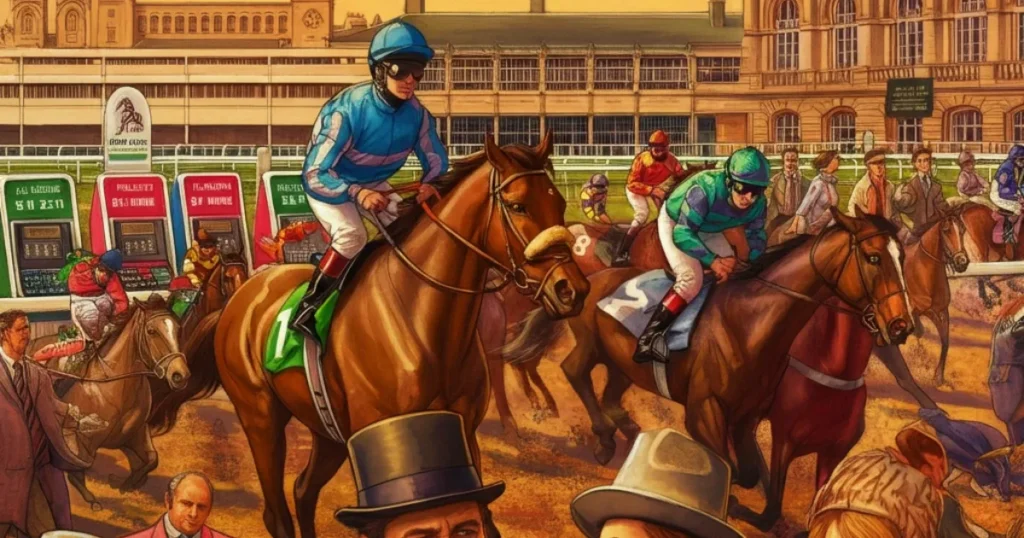La Filière Turf, or the “Turf Industry,” is the backbone of horse racing in France. Encompassing everything from breeding thoroughbreds to organizing races and betting operations, this industry holds a unique position in French culture and economics. It goes beyond being just a sporting activity, intertwining with traditions, local economies, and even export markets.
This blog explores the rich history, major stakeholders, economic influence, challenges, and innovations shaping La Filière Turf today. Whether you’re a seasoned horse-racing enthusiast or new to the scene, you’ll gain a clear understanding of this fascinating industry.
The History of La Filière Turf
Early Beginnings
The origins of La Filière Turf trace back to the early 19th century, when horse racing began to gain popularity in France. The establishment of tracks like Chantilly and Longchamp in the 1800s solidified France’s commitment to thoroughbred racing. Influenced by British traditions, French turf culture was characterized by elegance and the pursuit of excellence, which continue to define it today.
Government involvement played a crucial role in its early development, with regulations and institutions like the PMU (Pari Mutuel Urbain) introduced to formalize betting and ensure funding for the sport’s growth.
Evolution Through the 20th Century
The 20th century saw immense growth for La Filière Turf. Technological advancements such as mechanized tracks and live broadcasting brought horse racing to a wider audience. International races like the Prix de l’Arc de Triomphe further elevated France’s reputation on the global stage.
Meanwhile, improvements in breeding practices shaped the quality of French thoroughbreds, establishing them as some of the world’s finest.
Who Are the Key Players?
Several stakeholders come together to make La Filière Turf the vibrant ecosystem it is today.
Breeders and Trainers
At the heart of the industry are breeders who specialize in producing top-notch racehorses. Regions like Normandy have become synonymous with superior horse breeding. Trainers, on the other hand, refine the natural abilities of these horses, preparing them for competition on domestic and international tracks.
Racing Organizations and Tracks
Notable racing organizations like France Galop oversee the organization and regulation of horse racing in France. Iconic tracks such as Longchamp and Deauville are integral hosts to prestigious races, drawing spectators and betting enthusiasts from around the world.
Bettors and Spectators
The bettors form a significant part of the industry’s ecosystem. The PMU, as France’s state-regulated betting operator, facilitates wagering on races while generating funds that support the overall infrastructure of La Filière Turf. Spectators, whether at tracks or watching remotely, sustain the cultural and economic vibrancy of turf events.
The Economic Impact of La Filière Turf
The turf industry is more than just a sport in France; it’s a vital economic sector.
Revenue Generation
La Filière Turf generates significant revenue from racing events, betting, breeding, and tourism. With millions of bets placed annually, the PMU alone contributes an estimated €7 billion to the French economy. This revenue not only sustains the sport but also funds public welfare projects such as healthcare and education.
Job Creation
From jockeys to stable hands, veterinarians, farriers, and event staff, the industry supports tens of thousands of jobs. Breeding farms, race tracks, and betting agencies all depend on a robust labor force.
Export Opportunities
French thoroughbreds and training expertise are highly sought after on the global stage. The export of racehorses and collaborative international events further highlight the economic significance of La Filière Turf.
Challenges Facing La Filière Turf
Despite its strengths, La Filière Turf faces several challenges.
Decline in Betting Revenue
With the rise of online gambling and other forms of entertainment, traditional horse-race betting is losing market share. This dip in PMU revenue has created funding concerns for the industry.
Animal Welfare Controversies
Horse racing has come under scrutiny from animal-rights advocates, highlighting concerns around the treatment of horses and the risks involved in the sport. Calls for stricter regulations and ethical practices are growing louder.
Competition from Other Sports
Horse racing must compete with soccer, basketball, and other sports for spectator attention. TV time, sponsorships, and social media engagement are all factors where the turf industry struggles to maintain a competitive edge.
Climate Change
From the maintenance of race tracks to the logistics of transporting horses, climate change poses long-term challenges to La Filière Turf. Sustainable practices will be crucial for its future.
What Does the Future Hold for La Filière Turf?
The future of La Filière Turf largely depends on its ability to adapt to changing times while staying true to its roots.
Innovation in Technology
AI-driven betting platforms, live-streaming services, and virtual reality experiences are helping the sport modernize and appeal to younger audiences. Additionally, advanced data analytics for breeders and trainers could revolutionize horse selection and preparation.
Sustainability Initiatives
Adopting environmentally friendly practices, such as solar-powered race tracks and sustainable waste management, will be key in aligning the industry with global climate goals.
Diversification of Revenue Streams
Exploring alternative revenue streams, such as merchandise, exclusive memberships, and live-streaming subscriptions, could reduce reliance on betting income.
Strengthening Community Engagement
Promoting horse racing as an inclusive, family-friendly experience could encourage greater participation. Educational programs might also be effective in cultivating interest among younger generations.
Why La Filière Turf Is More Than a Sport
La Filière Turf represents a unique blend of tradition, economic importance, and cultural identity in France. While it faces challenges, its resilience lies in its ability to innovate while preserving its rich heritage.
By addressing modern issues with creativity and a commitment to sustainability, La Filière Turf can continue to define horse racing worldwide for years to come.
Whether you’re a bettor, a spectator, or someone curious about the industry, this storied tradition offers something for everyone. Keep an eye on the innovations shaping the next chapter of this fascinating ecosystem.





